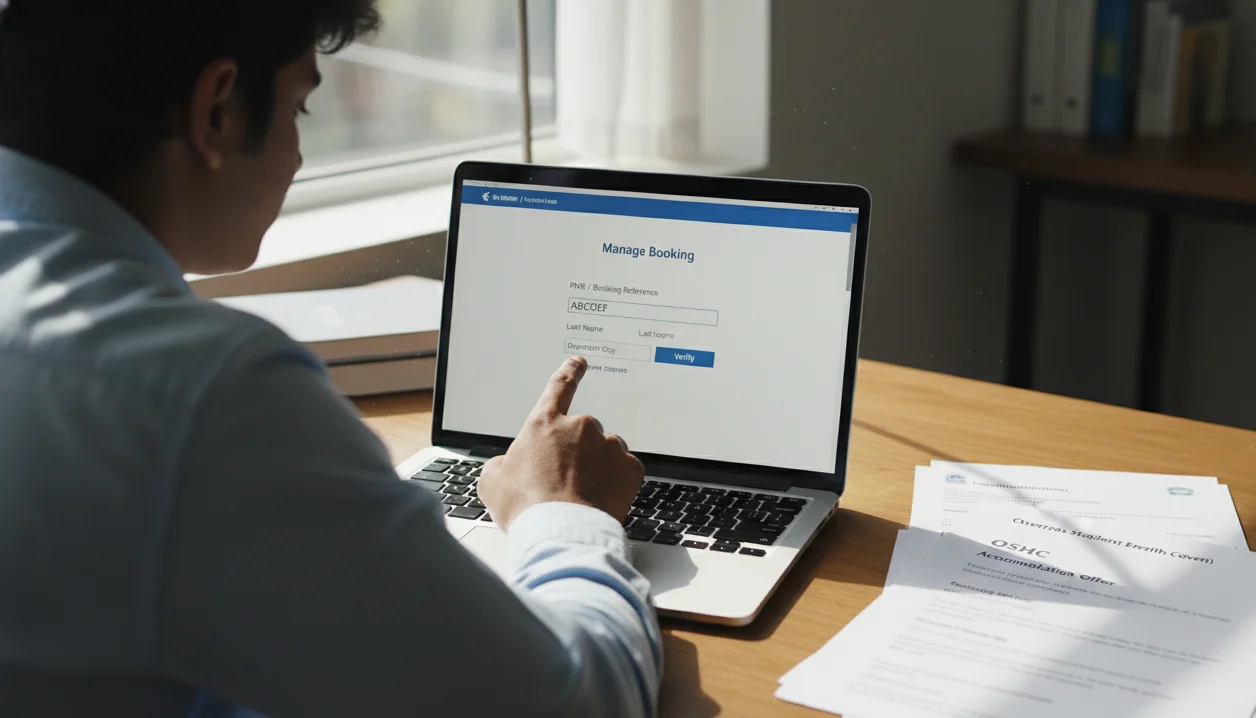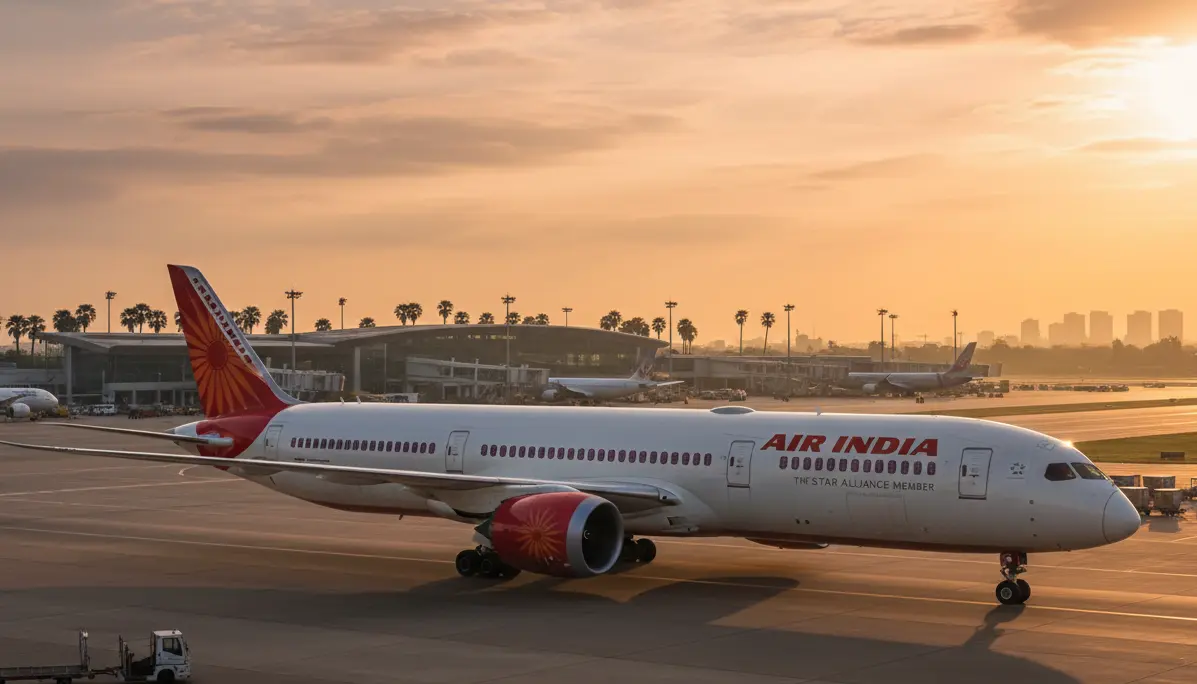Does A Dummy Ticket Help You Secure An Australian Student Visa?

How a Verifiable Dummy Ticket Supports Your Australian Student Visa
Picture your Subclass 500 file as a timeline. CoE lands. OSHC starts. Orientation looms. Accommodation move-in is fixed. Now you need an arrival plan that ties it all together without burning cash on a full ticket. That’s where a verifiable flight hold can pull real weight. It isn’t mandatory for Australia, yet it can show you’ve planned a practical landing window that matches your course and insurance dates. Case officers read consistency and intent. A dummy ticket provides that proof without upfront costs, making it a smart choice for many applicants.
They want clean, believable timing, not guesswork. Here, we’ll show you how a traceable reservation supports Genuine Student checks, how to verify the PNR correctly, when a refundable fare is smarter, and how to time everything around VFS and processing quirks common for Indian applicants. For more details on visa basics, visit our FAQ. Let’s make your file look ready. Secure your PNR in minutes—start your dummy ticket booking now. If you're new to this, check out our blogs for additional tips.
dummy ticket for Australian student visa is one of the most useful documents travelers prepare when organizing international trips. While most countries do not ask you to buy a fully paid ticket upfront, they do expect a verifiable proof of travel intent that clearly shows your entry and exit plan. This helps demonstrate that you will follow your schedule and return on time.
Using a professionally issued and verifiable dummy ticket for Australian student visa is the safest and most convenient way to satisfy this requirement without financial risk, especially for visa applications and immigration preparations.
Last updated: November 2025 — verified against the latest traveler documentation practices and global consular guidelines.
Table of Contents
Learn more about our team's expertise on our About Us page. This guide will equip you with everything needed to integrate a dummy ticket seamlessly into your application.

Why A Verifiable Flight Hold Strengthens A Subclass 500 Visa
You already know a dummy ticket is not mandatory. What matters is whether your reservation helps your story read clean, consistent, and real to an Australian case officer. Need a verifiable hold that matches your CoE and OSHC dates? Book a dummy ticket today!
Intent Without Prepayment: What Officers Actually Notice
Think of the flight hold as proof that you plan to arrive on a sensible date. It signals intent. It avoids the risk of paying for a full fare before a decision.
Officers do not reward you for spending money. They look for believable timelines that fit your Confirmation of Enrolment. They check whether the itinerary could actually get you to campus in time. A verifiable PNR tells them your plan exists in the airline system, not just in a PDF. That reduces doubt during Genuine Student checks. To understand more about PNR verification, refer to guidelines from the International Air Transport Association (IATA).
Lock Your Travel Window To CoE, Orientation, And Housing
Your arrival window should match campus reality. For most intakes, landing 7 to 21 days before classes works well. It gives time for onboarding and jet lag.
Align your hold with:
- CoE start date. If classes begin on 15 February, target arrival between 1 and 8 February.
- Orientation schedule. Many universities run sessions 5 to 10 days before teaching week. Try to attend. It shows commitment.
- Housing handover. If your PBSA or uni hall room activates on 3 February, avoid landing on 15 January or 14 February. Keep it tight.
For packaged ELICOS plus degree starts, make the first leg land well before the language course. Your itinerary should support progression, not chase it. This alignment not only demonstrates foresight but also aligns with Australian immigration expectations for structured planning in student applications.
Sync OSHC Start To Your Touchdown
Officers read dates across documents. If your OSHC begins on 1 March but your flight hold shows 15 February arrival, it looks off. If OSHC starts on 1 February and you plan to arrive on 28 March, it also looks off. Keep coverage live from the day you enter Australia.
A good rule:
- Start OSHC 2 to 7 days before your planned entry.
- If you refresh a hold, keep OSHC consistent or request an updated certificate that matches your new plan.
Ensuring this sync prevents minor discrepancies from escalating into credibility concerns during the assessment phase.
Map The File Like A Case Officer Would
They read your file as a sequence, not as attachments. Build a clean “timeline spine” and keep everything tied to it.
Typical order:
- University offers and acceptance.
- Deposit or fee evidence if your provider requires it.
- CoE issued with exact course dates.
- OSHC certificate with start and end aligned to the CoE.
- Accommodation plan with a realistic move-in date.
- Verifiable flight hold that lands before orientation.
- eMedical receipt if you completed health checks early.
When this spine is coherent, your Statement of Purpose feels credible. Your flight hold becomes one more data point that supports the whole story. Expanding on this, consider how each element interconnects: the CoE sets the academic anchor, OSHC the health safety net, and the dummy ticket the logistical bridge.
Small Mistakes By International Students That Trigger Big Questions
Most refusals trace back to inconsistencies and weak logic. Avoid these credibility bumps:
- Untraceable PNRs. If the airline portal cannot find your booking, it hurts. Officers may assume the ticket is fabricated.
- Expired holds. An expired PDF looks careless. Refresh the reservation before lodging or biometrics.
- Impossible connections. Two-hour transfer at a complex airport during peak hours can appear unrealistic. Aim for conservative layovers.
- Wrong city or airport. Do not book Gold Coast if your campus is in Perth. If you must, explain the domestic hop in your SOP.
- Date collisions. Flight after the first week of class. OSHC starting a month late. Housing starting two weeks after arrival. Fix them.
- Template spam. Reissuing the same itinerary with random dates every few days can look like you are gaming the system. Keep changes purposeful.
By addressing these proactively, you mitigate risks that could otherwise lead to requests for additional information, delaying your grant.
Finance Signals Without Buying A Ticket
You do not need a paid ticket to show that you can travel. Your proof of funds already covers that. What you must avoid is a bank story that contradicts your travel plan.
For Indian applicants:
- Keep a clean trail for tuition, living cost funds, and any education loan drawdowns.
- If your sponsor covers travel, make sure their affidavit and bank statements align with your intended arrival month.
- Do not show sudden large deposits right before lodging. They raise questions.
The flight hold should look affordable in the context of your finances. That is enough. To bolster this, include sponsor affidavits that explicitly reference travel affordability, tying back to your dummy ticket dates.
When A Hold Adds Real Value For India-Based Applicants
A verifiable hold is especially useful if:
- Your orientation is close and you want to prove readiness.
- You study in a city with tight housing cycles and you have a fixed move-in date.
- Your profile needs extra clarity, such as a career switch or a recent gap. The itinerary shows decisive planning.
- You plan to lodge at VFS and want a tidy, consistent pack that aligns across CoE, OSHC, and accommodation.
In high-volume application periods, this can differentiate your file from others lacking such detail.
Practical Touches That Impress Quietly
Little details make your file feel lived-in and prepared.
- Choose sensible routings from India. DEL or BOM to SYD, MEL, BNE, or PER via ME3 or Southeast Asia hubs is standard. Avoid long backtracks that inflate risk.
- Respect timezone math. Arrive a few days earlier than you think to account for overnight legs and local time shifts.
- Label your documents clearly in ImmiAccount. Use names like “Flight_Reservation_PNR_ABC123_Feb2026.pdf.” Neat labeling reduces friction during review.
- Keep one story. The dates in your SOP, CoE, OSHC, housing letter, and flight hold should all agree at a glance.
These subtle enhancements can subtly elevate the perceived thoroughness of your application.
When your itinerary is verifiable and the dates line up, the reservation earns its place. It shows intent without committing funds and helps your Subclass 500 file read organized, low risk, and ready for a decision.

Make Your Reservation Work For GS: Verification, Dates, And Clean Paperwork
You have the outline of your trip. Now make it stand up to Genuine Student checks. The goal is simple. A reservation that is real, traceable, and synced to every key date in your file. Refresh your itinerary before VFS with fast, flexible dummy ticket booking.
Show It Exists: Quick PNR Checks That Count
A case officer cannot phone every airline. You need an itinerary that proves itself in seconds.
- Use the airline’s “Manage Booking” page. Enter the six-character PNR and your surname. Confirm that the itinerary, passenger name, and dates match your PDF.
- If the itinerary was built across partners, check the operating carrier portal for each long-haul segment. Mixed-carrier itineraries are common from India.
- Learn basic status codes. HK or Confirmed is good. NN or On Request is weak. PN or Pending is not submission material.
- Take a clean screenshot of the airline page if asked. Do not crop names or flight numbers. Do not edit anything.
- Recheck the PNR 24 hours later. Holds that vanish quickly can make your file look unstable.
If your PNR fails on any portal, fix it before you lodge. An untraceable record is a red flag during GS assessment. Pro tip: Test multiple devices to ensure accessibility.
Keep Dates Singing In Harmony With Visa Processing Times
Consistency wins. Your travel window has to fit the study and insurance story you already told.
- CoE start. Plan to land 7 to 21 days before teaching week. If your CoE starts 15 February, a 2 to 8 February arrival reads well.
- Orientation. If sessions run the week before classes, show up on paper. It supports intention and realism.
- OSHC start. Start coverage a few days before your arrival. If OSHC begins after your flight date, it looks careless.
- Accommodation. If your PBSA contract starts 3 February, aim for a 1 to 4 February touchdown. Include the housing letter if available.
- SOP date logic. Write one arrival plan in your SOP and mirror it in the itinerary. Mismatched narratives weaken credibility.
For a packaged ELICOS plus degree, anchor the first landing to the language course start, not the later degree date. This precision ensures your application narrative flows logically from preparation to arrival.
Do Not Hand In A Time Bomb: Expiry And Reissues
Holds expire. That is normal. The problem is when an officer opens your file and the PNR no longer exists.
- Check the validity on the day you submit online or give biometrics at VFS. Refresh the reservation if needed.
- When you refresh, keep the same routing and window where possible. Frequent, large swings look like you are guessing.
- Save an updated PDF with a sensible name, for example, Flight_Reservation_PNR_ABC123_Feb2026.pdf. Keep the old file out of your pack.
If processing drags, set a reminder to renew the hold at safe intervals. Avoid letting it lapse between biometrics and a possible case note request. Tools like calendar alerts can help manage this effectively.
Money Story That Matches The Travel Plan
You do not need a paid ticket to show financial capacity. You do need a bank story that fits the timeline.
- Keep tuition and living cost funds traceable. Use statements that cover the months leading up to your planned arrival.
- If a sponsor covers travel, make sure their letter and balances align with your intended month of departure.
- Avoid sudden large cash deposits right before lodging. They invite questions and slowdowns.
- If you hold a refundable fare instead of a dummy reservation, keep the refund policy and payment proof handy. Do not upload unless asked.
The reservation should look affordable in context. That is enough for GS. Integrating this with your overall financial proof creates a robust, unquestionable profile.
What To Upload, And What To Skip For An Australian Student Visa
Less clutter. More clarity. Officers appreciate files that are easy to read.
- Upload the reservation PDF that shows the PNR, passenger name, and sectors. That is your core proof of plan.
- Only add a single airline portal screenshot if there is a specific request or you suspect a portal may be inconsistent on shared codeshares.
- Do not upload fare rules, multi-page terms, or speculative return itineraries unless required.
- Keep file names short and meaningful in ImmiAccount. Use dates in DDMMMYYYY format to avoid confusion, for example, Arrival_02Feb2026_SYD.pdf.
If you later change dates, replace the old file and keep your SOP addendum short and clear. Streamlining uploads focuses attention on key evidence.
Troubleshooting In The Real World: India Scenarios
Small India-specific fixes prevent big headaches.
- Transit visa risks. Check UK and Schengen transit requirements if you route via London, Frankfurt, Paris, or Amsterdam. Many students switch to ME3 or Southeast Asia hubs to avoid extra visas.
- Hub choice and buffers. Peak evening waves at DXB, DOH, and AUH are busy. Choose conservative layovers, especially if your first leg is a domestic hop to DEL or BOM.
- Time zone traps. You lose calendar days on west-to-east routes. Land earlier than you think. Give yourself recovery time before orientation.
- Public holiday slowdowns. VFS closures and bank holidays in India can push biometrics or loan disbursals. Keep your hold valid through these bumps.
- ELICOS plus degree packages. Book arrival before the English start, not just the degree date. It proves you will attend the first component that drives your CoE.
If you need a verifiable hold quickly, choose a service that issues a live, checkable PNR and lets you change dates without drama. The reservation’s real job is simple. It should prove intent, align dates, and stay valid long enough for your file to be read. For Indian applicants, factoring in monsoon season delays or festival timings can further refine your planning.
When your booking verifies in a click and every date matches, your application feels steady. That steadiness helps the GS assessment along, even though a ticket is not mandatory.
Choose Your Booking Strategy Without Guesswork
You do not need to buy a ticket to build a strong Subclass 500 file. You do need a booking strategy that fits your student visa application and the dates on your Confirmation of Enrolment CoE. Here is how the three common options stack up for international students from India. Ready to show intent without prepaying a full fare? Book a dummy ticket now.
Option A: Verifiable Hold That Proves Intent
A genuine reservation with a live PNR supports a coherent Australian visa story without prepayment. It helps your application process because it matches your commencement date, overseas student health cover, and accommodation plan.
Where it helps
- Aligns neatly with student health cover, OSHC, and housing start.
- Works well for packaged courses when your first course begins earlier than the main course.
- Lets you apply online while keeping costs low during visa processing times.
Points to manage
- Holds expire. Refresh them so the PNR remains visible when applications lodged are reviewed by Home Affairs.
- Keep routing stable to avoid course gaps that look like poor planning.
- If asked, attach evidence that the PNR verifies on an airline portal.
If you use a service, reliable dummy ticket providers book you with major airlines like Emirates, Qatar Airways, or Singapore Airlines. That shows a workable route from your home country to an Australian university city. This option is particularly cost-effective for students balancing multiple application expenses.
Option B: Fully Refundable Or Flexible Ticket
Buying a flexible fare can remove uncertainty if you must travel quickly after a grant. It may suit a research or doctoral degree timeline where lab onboarding or supervisor meetings cannot slip.
Upsides
- Clear travel commitment for a student visa holder who needs certainty within standard visa grant periods.
- Easier to keep the same itinerary if the visa period pushes close to orientation.
Trade-offs
- High outlay until the refund process. Keep receipts and fees paid ready, but only provide evidence if requested.
- Refund policies vary by visa subclass context and airline rules. Read them closely to stay within Australian laws on consumer rights.
- Be cautious with a low-cost airline if the fare is nonrefundable. Flexibility matters more than headline price.
Make sure your health insurance dates cover your intended arrival and that your offer letter timeline still works if a decision lands late. For PhD candidates, this can provide peace of mind during critical research setups.
Option C: Wait To Book Until Grant
Some applicants decide to wait. This suits profiles with long lead times or when the department requests further information that could change the arrival window.
Pros
- Zero reissues or renewals while you track your visa status.
- No risk of an expired PNR during a case officer review by the Department of Home Affairs.
Cons
- Prices can spike near orientation. That can stress budgets when course fees are due.
- Your file might look underplanned if you have a tight commencement date and appropriate accommodation already locked.
If you choose this path, keep your SOP tight. Provide proof of readiness through required documents such as OSHC, funding, and English language proficiency so your plan still reads credible. This conservative approach works best for those with flexible academic starts.
Read Your Profile Like An Officer Would
Your education provider, your degree type, and your risk posture shape which option adds value.
- For most international students in taught programs, a verifiable hold is usually enough to show intent.
- A new student visa for a doctoral degree or a research start may justify a flexible ticket if labs or fieldwork begin early in the academic year.
- If your background involves work gaps, use one course progression that shows how the main course builds on your goals to study in Australia.
Keep English language tests, fees paid confirmations, and contact details consistent across the file. For migration purposes, accuracy matters more than the booking type. Tailoring your choice to your specific circumstances enhances overall application strength.
Timelines, Rules, And Practicalities For India
You submit to Home Affairs, but the Commonwealth government wants consistency across documents.
- Check visa conditions on the Home Affairs website before you apply for your visa. Follow any health requirement and character requirement instructions.
- Ensure your valid visa will span the teaching blocks based on calendar months that match the CoE.
- If you will be a visa holder with dependants, plan for subsequent entrants early and ensure appropriate accommodation.
- If you need immigration assistance, use registered advisers only. Unregistered help can breach Australian government guidance.
When you apply for a student visa subclass 500 visa, attach evidence that your health cover matches the travel window. For further information, visit the Home Affairs website and, if relevant, the foreign affairs guidance for scholarships. Indian applicants should also monitor bilateral agreements that might influence processing speeds.
Paperwork That Keeps Everything In Sync
Before you apply for your visa, assemble a clean pack:
- CoE showing the commencement date and academic year.
- OSHC certificate that overlaps your planned arrival.
- Funding summary, bank statements, and any education loan letters that match the visa period.
- A reservation or flexible ticket consistent with your itinerary.
- SOP that links English language outcomes to your main course and future goals.
Add only what helps. Provide evidence that answers the case officer’s likely questions. If you later leave Australia during breaks, keep your travel aligned with your visa conditions.
Confirm your application details match across systems:
- Names, dates, and contact details line up with airline records.
- Health cover and housing dates match your flight window.
- Your chosen option still works with current visa processing times.
- If you must change plans, update the booking and keep one story.
Handled this way, any of the three strategies can work. The right choice is the one that supports a coherent file and keeps you ready for a decision by Home Affairs without financial strain. Regularly reviewing Home Affairs updates ensures your strategy remains compliant.
India-Specific Execution Playbook: Timelines, Routing, And Risk Controls
You have a coherent plan. Now make it work on the ground in India. This gives you a step-by-step way to align dates, routes, and documents so your file reads steady and low risk. Keep your file clean and consistent with our instant dummy ticket booking.
Build Your Timeline Around Real Milestones
Start with fixed points, then fit everything else to them.
- CoE and orientation. Pick an arrival window of 7 to 21 days before classes. If orientation is mandatory, land in time to attend it.
- OSHC. Set the start a few days before your touchdown. Keep it consistent across any refreshed reservation.
- Housing. Use your contract start as an anchor. If your room opens on 3 February, plan to arrive between 1 and 4 February.
- Biometrics and VFS. Check appointment availability first. Keep your hold valid through biometrics and the next two weeks in case of follow-up requests.
- eMedical. Consider upfront medicals if your intake is close. Upload receipts so your health checks are easy to match with your arrival plan.
Write these dates on a single page. Every document should support this page without exceptions. This milestone mapping serves as your personal checklist for application harmony.
Keep Your SOP Tight And India-Relevant
Your narrative has to make sense quickly.
- Link your course to clear outcomes in India or the region. Avoid generic claims.
- If you are changing fields, explain the bridge. Show modules that connect your past work to the new path.
- For a packaged English plus degree, explain why the language course sits before the degree and how it supports success.
- Use simple, active sentences. Repeat the same arrival plan you show in your reservation.
When your SOP reflects a realistic itinerary, the reservation strengthens your Genuine Student story instead of distracting from it. Incorporating India-specific career goals, like bridging to tech sectors in Sydney, adds authenticity.
Money That Reads Clean Under Scrutiny
Funding should be traceable and calm.
- Avoid last-minute large deposits. Spread savings and transfers over time with clear sources.
- If you have an education loan, include sanction letters and disbursement schedules that match your intake.
- If a sponsor pays, make sure their statements and letter align with your arrival month and housing timeline.
- Keep tuition and living costs evidence consistent with the city you are moving to. Melbourne and Perth budgets differ. Show you know that.
The goal is a bank trail that makes your travel plan believable without buying a full ticket. For instance, detailing cost-of-living research for your target city reinforces practicality.
Routing From India Without Surprises
Choose routes that look practical to anyone reading them.
- Hubs that work. Delhi, Mumbai, Bengaluru, Chennai, and Hyderabad have strong connections to Sydney, Melbourne, Brisbane, Adelaide, and Perth via Middle East and Southeast Asia hubs.
- Conservative connections. Aim for buffer-friendly layovers. Avoid ultra-tight transfers during peak evening waves at Doha, Dubai, or Abu Dhabi.
- Transit visa checks. If your path touches London or a Schengen airport, verify transit rules. Many students switch to ME3 or Southeast Asia hubs to avoid extra visas.
- Domestic feeder legs. If you start from a tier-2 city, pad the connection to your international leg. Delays happen.
A sensible route reduces questions about feasibility and shows you can actually make it to class. Opting for direct-ish paths minimizes perceived risks.
Make The Hold Last Through Admin Delays
Holds expire. You can manage that.
- Generate the first hold only after you have your CoE and OSHC in place.
- Time the hold to cover your VFS slot plus two extra weeks. Refresh if the PNR is due to lapse before likely review.
- When you refresh, keep the same routing and arrival window where possible. Avoid frequent swings.
- Label files clearly. Replace old versions in your pack so there is no confusion about which itinerary is current.
A stable reservation across the review window reads as organized planning, not guesswork. Scheduling monthly checks keeps you ahead of expirations.
Pack Only What Helps An Officer Decide
Less noise, more evidence.
- Include the reservation PDF that shows the PNR, sectors, and passenger name.
- Add a single airline portal screenshot only if requested or if you expect codeshare lookup issues.
- Keep filenames tidy, for example, Flight_Reservation_PNR_ABC123_04Feb2026.pdf.
- Match names and dates across every file. One typo can cause unnecessary checks.
If you later shift dates, upload the new file and keep your explanation short and factual. Prioritizing relevance streamlines the review process.
Special Cases You Should Plan For
A few common scenarios need extra care.
- ELICOS plus degree. Land before the English course begins. It proves you will attend the first component that drives your package.
- Career switchers. Use your itinerary to show seriousness about onboarding events, lab inductions, or bridging workshops.
- Late decisions. If a decision may land close to orientation, consider two parallel plans. A refreshed hold and a back-pocket flexible fare quote. Only purchase if granted.
- Regional campuses. If you arrive in a gateway city first, show the domestic connection to your campus town in your SOP.
These touches help your file feel lived in and thought through. For regional studies, highlighting domestic flight affordability adds depth.
After Grant: Move From Hold To Ticket Smoothly
Once granted, finalize your travel with the same discipline.
- Choose a fare with student-friendly baggage and reasonable change rules.
- Keep OSHC live from your entry date. If you changed your arrival, get an updated certificate if needed.
- Inform your university arrival team if they offer airport pickup. Share your final itinerary and contact details.
- Recheck housing handover times and weekend access rules so you are not stuck on arrival.
This is where your early planning pays off. You will step off the plane ready to start, with documents that still match. Post-grant, exploring student discounts on airlines can optimize costs further.
Handled step by step, your India-to-Australia move reads solid and low risk. The reservation does its quiet job. It proves intent, keeps dates consistent, and stays valid until a decision lands. That is exactly what a strong Subclass 500 file needs. Celebrating your grant with a confirmed booking marks the transition from preparation to action.
Signal Intent, Keep Dates Tight, Get Ready To Land
You do not need a paid ticket to look prepared. You need a plan that proves you will arrive on time and start strong. A verifiable reservation ties your story together with CoE, OSHC, orientation, and housing. It shows intent without risky spending. Keep every date aligned, refresh the PNR before key steps like VFS, choose sensible routings from India, and avoid clutter in your file.
If you change anything, update documents so your narrative stays consistent. That is what case officers look for. Build the timeline, keep it traceable, and you give the decision maker exactly what they need to say yes—and you land ready for week one. Align arrival, housing, and orientation today—book a dummy ticket. 👉 Order your dummy ticket today
What Travelers Are Saying
Why Travelers Trust DummyFlights.com
DummyFlights.com has been helping travelers since 2019, specializing exclusively in dummy ticket reservations to support visa applications like the Australian Subclass 500. We've supported over 50,000 visa applicants with verifiable PNRs that align seamlessly with CoE and OSHC dates. Our 24/7 customer support team ensures instant PDF delivery and secure online payments, all backed by a real registered business dedicated to your success. DummyFlights.com's niche expertise means every reservation is crafted for embassy scrutiny, reducing risks and boosting approval rates.
Related Guides
Frequently Asked Questions About Dummy Tickets for Australian Visas
To further assist, here are some expanded FAQs based on common queries from Indian students applying for Australian student visas. These build on the guide above, providing deeper insights.
What exactly is a dummy ticket, and is it accepted for Subclass 500?
A dummy ticket is a verifiable flight reservation with a real PNR, not a paid ticket. It's widely accepted for Subclass 500 as proof of intent, as long as it's traceable and aligns with your CoE. Unlike full bookings, it avoids financial commitment during processing.
How long should my dummy ticket be valid for the visa application?
Aim for at least 2-4 weeks validity from submission date, covering biometrics and initial review. Refresh as needed to match evolving timelines, ensuring the PNR remains active for officer verification.
Can I use a dummy ticket for multiple visa applications?
Yes, but customize dates and routes per application. For Australian visas, ensure it ties specifically to your study plan. Services like DummyFlights.com allow easy reissues for this purpose.
What if my dummy ticket expires before the visa decision?
Update it promptly via your provider and upload the new PDF to ImmiAccount. Include a brief note explaining the refresh to maintain transparency and consistency.
Does using a dummy ticket affect my Genuine Student assessment?
No, it strengthens it by showing planned arrival. As long as dates sync with OSHC and orientation, it demonstrates genuine intent without overcommitting funds.
These FAQs address core concerns, helping you navigate with confidence. For personalized advice, explore our FAQ section.
About the Author
Visa Expert Team - With over 10 years of combined experience in travel documentation and visa assistance, our team at DummyFlights.com specializes in creating verifiable travel itineraries. We’ve helped thousands of travelers navigate visa processes across 50+ countries, ensuring compliance with embassy standards.
Trusted Sources
- U.S. Department of State - Visa Information
- Schengen Visa Information
- International Air Transport Association (IATA)
Important Disclaimer
While our dummy tickets with live PNRs are designed to meet common embassy requirements, acceptance is not guaranteed and varies by consulate or country. Always verify specific visa documentation rules with the relevant embassy or official government website before submission. DummyFlights.com is not liable for visa rejections or any legal issues arising from improper use of our services.











